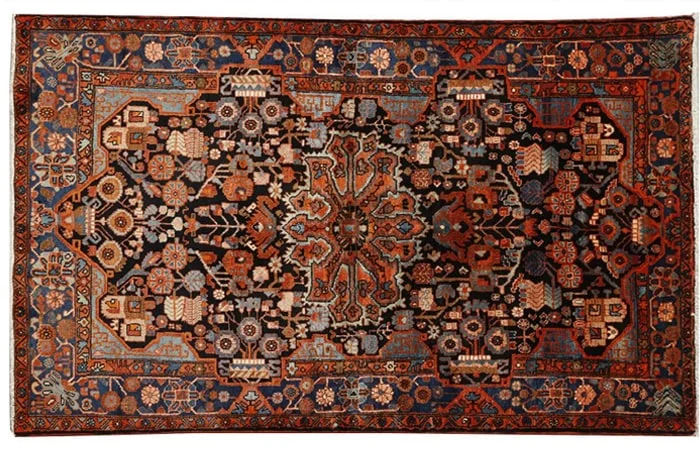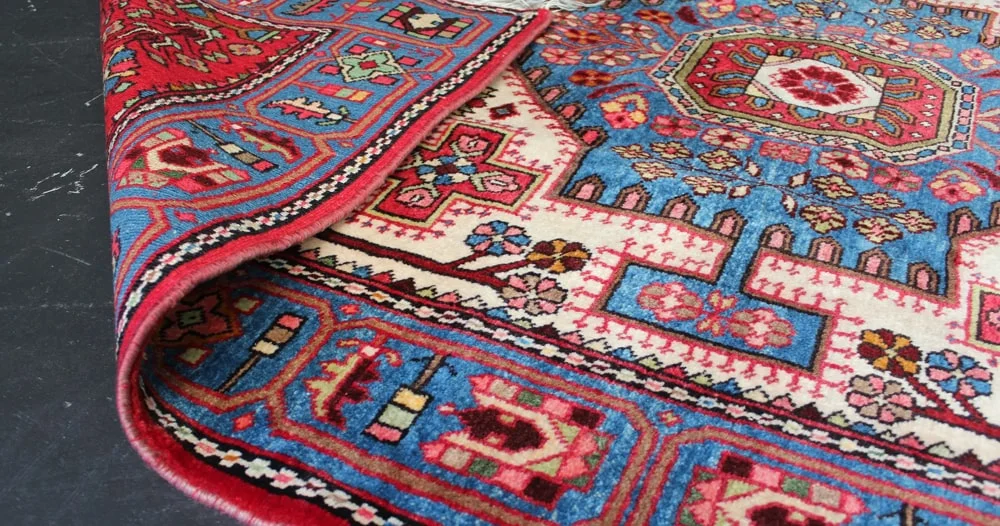Nahavand rug should be considered one of the most beautiful Persian rugs. Nahavandi weavers expertly tie all the beautiful designs to the white rug loom, which can be seen in a few places. Nahavandi rug weavers rely on quality raw materials, such as first-class wool from their livestock, quality dyeing, and unique designs. They produce carpets that interest the domestic market and western countries. This post will learn about the Nahavandi carpet, its characteristics, and its history.
Nahavand Rug History and Background
Nahavand is located in the west of Iran. Its rug is generally considered one of the colorful rugs, which has become very popular with gorgeous designs and attractive and vivid colors. Nahavand weavers weave red, blue, and yellow carpets, and the spectrums of these colors attract the eyes of every viewer. Europeans love these carpets, especially in Scandinavian countries with many cold months; these rugs provide a warm home with long piles of energizing colors.
Any region where animal husbandry has been common has a long history of rug weaving because of the easy availability of raw materials for rug weaving, such as “wool,” which was readily available from sheep and cattle to the people of that area. The people’s economy of Nahavand city is also based on agriculture, animal husbandry, and handicrafts. It has caused the particular progress of these people in producing handicrafts. Villagers and nomads mainly do rug weaving in this city.

Nahavand Rug Features
- The Nahavand rug designs are in the form of traditional methods, such as rhombuses, quadrilaterals, and other geometric designs with large and small flowers and leaves.
- The colors used in the rug texture are divided into two main categories, natural and artificial. The use of natural colors obtained by plants gives the rug extraordinary beauty and effect. Natural color has more durability than artificial ones. In most cases, Nahavand rugs use natural dyes for texture.
- These rugs are usually dyed using undyed camel hair and sheep wool, with red and blue backgrounds.
- Most Nahavand rugs have Taranj and Lachak patterns
- Its lineage was 25 rows in the past, but in the past few years, it’s between 30 and 40.
- The weaving method of Nahavand rug is similar to Hamedan carpets. The knots are mainly Turkish, and some Persian rugs are woven on vertical looms. Nahavand rugs are mainly single warp, and their piles are long, thick, and full of wool.
- You can rarely see Nahavand rugs in large sizes, and mostly small sizes are standard in this region. Their usual length is 2.5 x 1.5.
The Last Word
Among the different arts and crafts common in Nahavand, rug weaving with famous and historical brands takes a person’s feeling and mind to the depth of the art and beauty hidden in the rug. It’s as if nature sleeping in the heart of the rug talks to the human being and takes the heart, mind, and intelligence of the person with it into solitude.

